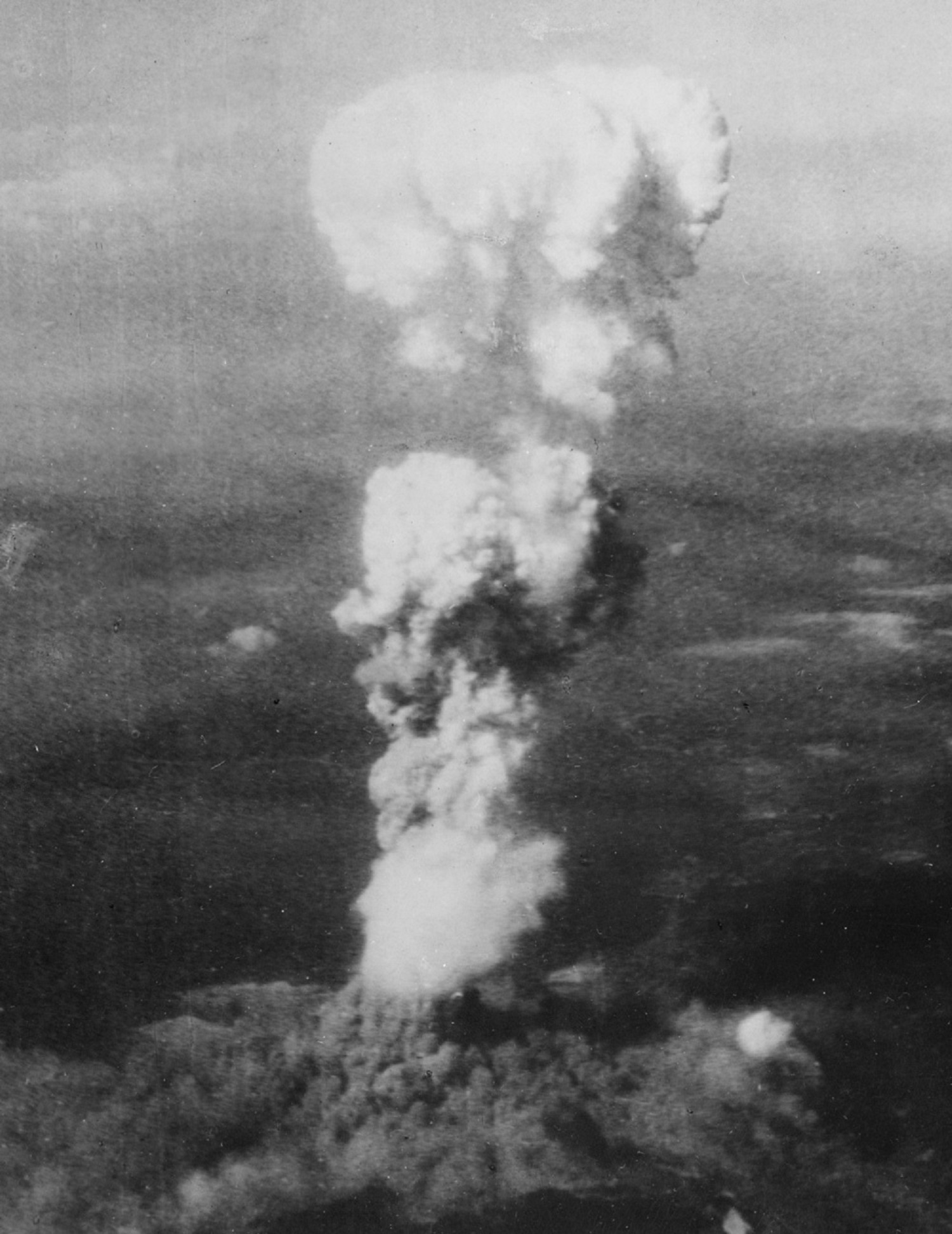 |
Aerial photograph showing the area in Hiroshima before and after the Little Boy atomic bomb. |
At 8:15 a.m. on 6/8/1945, the American B-29 bomber Enola Gay dropped the atomic bomb "Little Boy" on the Japanese city of Hiroshima.
The US reportedly spent 4 years developing the atomic bomb after the Japanese military attacked Pearl Harbor in 1941.
About 30 seconds after the detonation, the Enola Gay circled around, allowing the crew to observe the unfolding events. Even at an altitude of over 9,100 m, the mushroom cloud generated by the bomb rose higher than the Enola Gay's position.
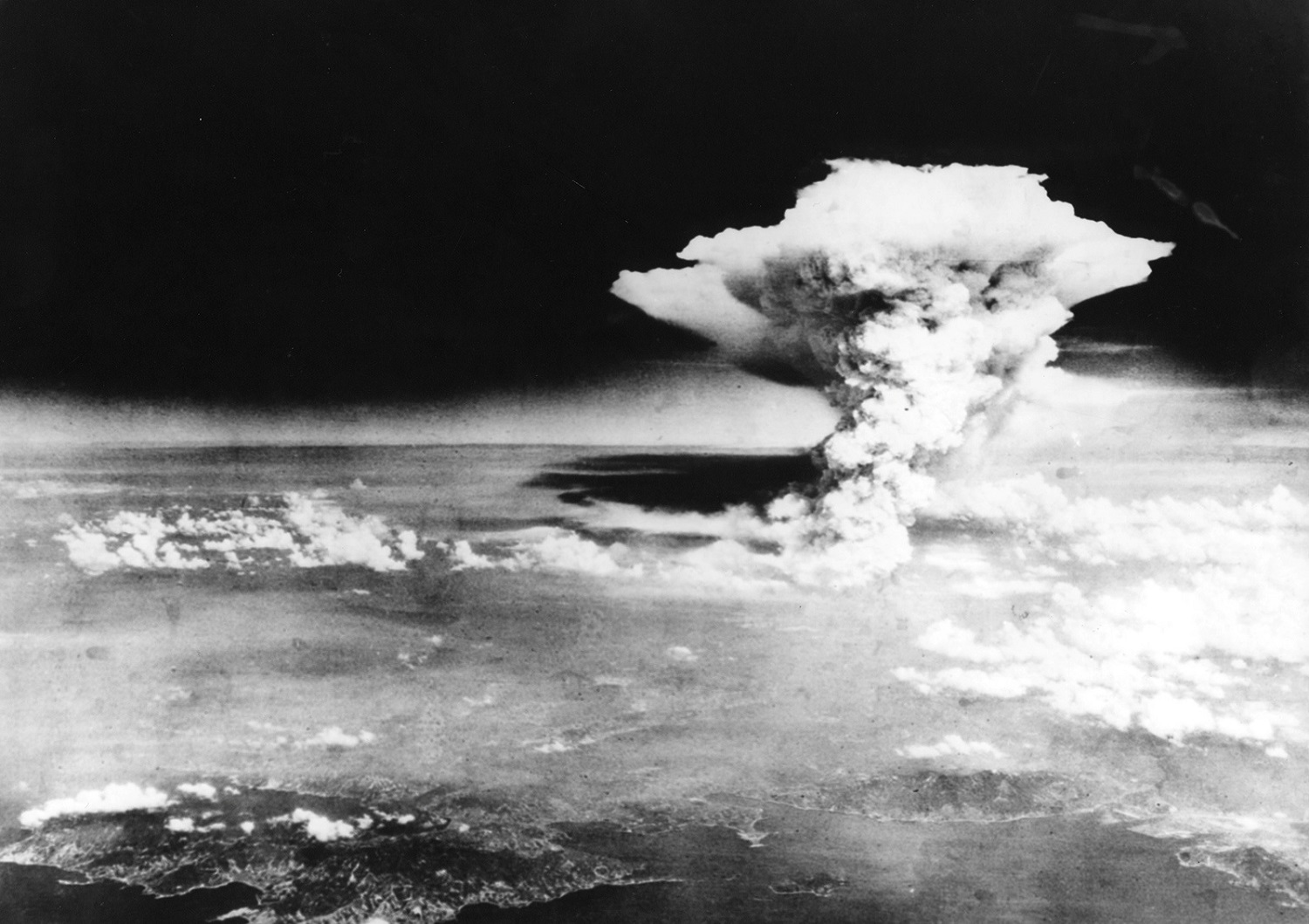 |
In a telegram to a colleague in Tokyo on 30/8/1945, a Red Cross representative in Hiroshima described "the city 80% obliterated, all hospitals destroyed or seriously damaged. Have inspected two hospitals, conditions beyond description". |
Within 10 minutes, the cloud reached nearly 18,300 m. The entire city was enveloped in thick black smoke following the explosion.
The image of the mushroom cloud was taken about 3 hours after the bombing.
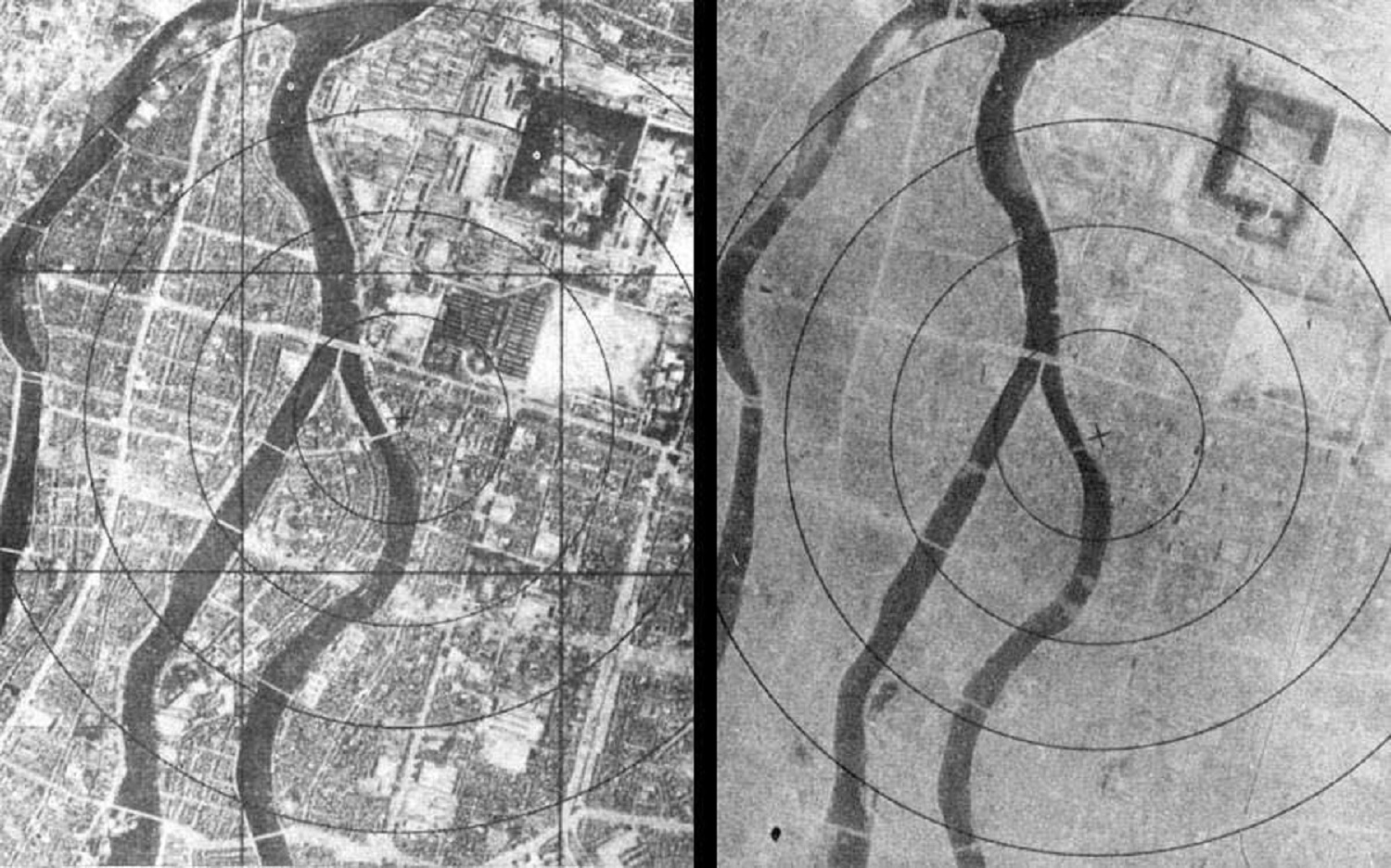 |
An aerial photograph showing the remains of Hiroshima on 5/9/1945, one month after the devastating atomic bombing. |
 |
In Hiroshima, about 70% of the buildings were flattened or burned, with a damage radius of up to 2 km from the hypocenter. Steel-framed buildings within 1.7 km suffered severe structural damage, while multi-story brick buildings within 1.3 km were completely destroyed.
Almost all wooden or wood-framed houses within 3 km were destroyed or heavily damaged, their roofs melted by the intense heat from the blast.
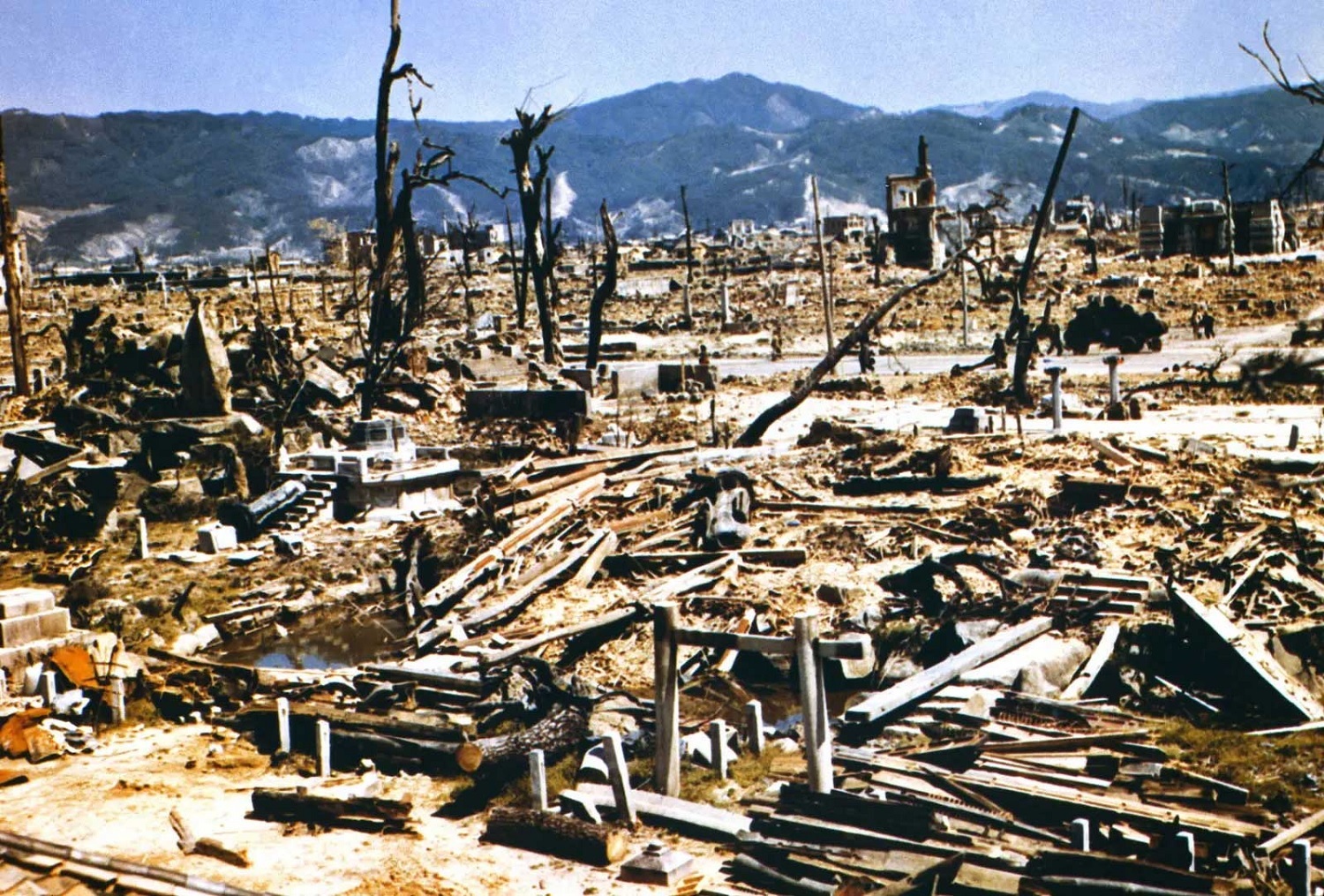 |
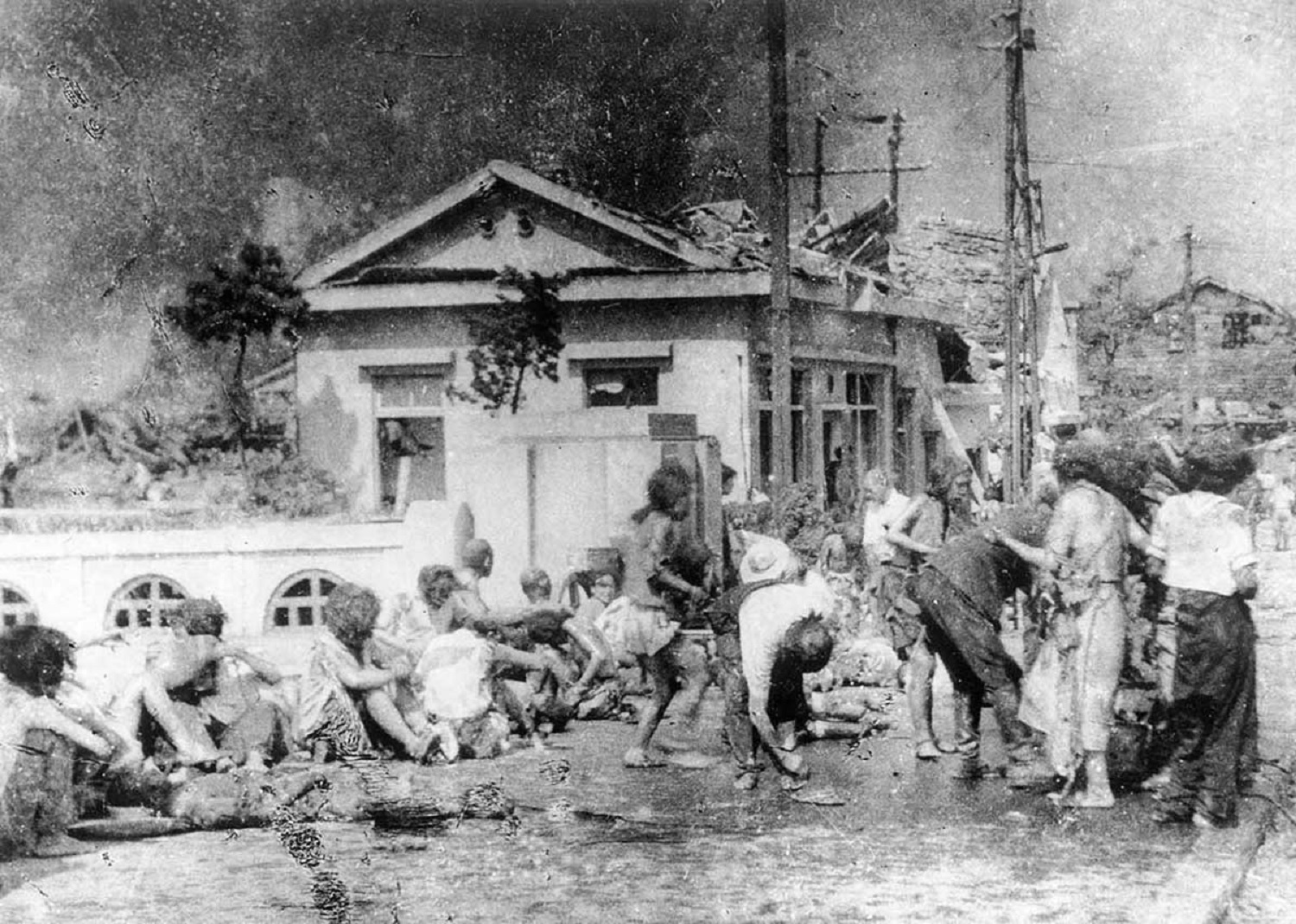 |
This photograph, taken around 11 a.m. on 6/8/1945, shows injured people awaiting treatment in Hiroshima. It is considered one of the first images of survivors after the atomic bombing.
The photo was taken by Yoshito Matsushige, a photojournalist for the local newspaper Chugoku Shimbun and a Japanese military photographer. Despite suffering radiation exposure and injuries from flying glass, he grabbed his camera and rushed outside to document the grim scene.
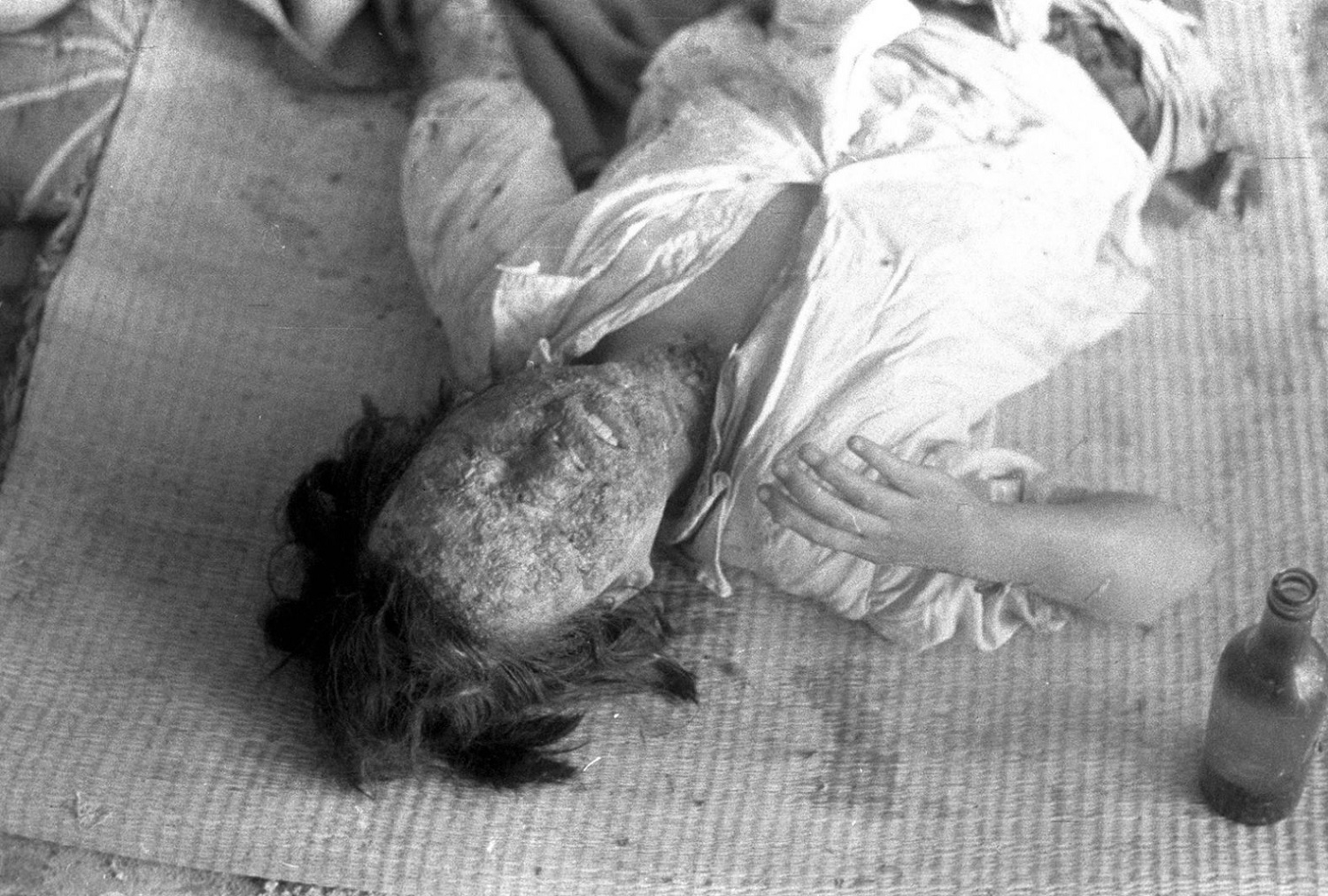 |
A patient with severe radiation burns is being treated at the Hiroshima Red Cross Hospital in August 1945.
Many survived the initial blast but died in the following weeks and months from severe injuries or radiation-related illnesses.
"Many patients seemed to be recovering, but their condition suddenly worsened, and they died," the Red Cross representative's telegram noted.
Around 78,000 of Hiroshima's 350,000 residents were killed instantly, according to Time. The total death toll from the bombing and its aftermath is estimated at 140,000 by the end of that year.
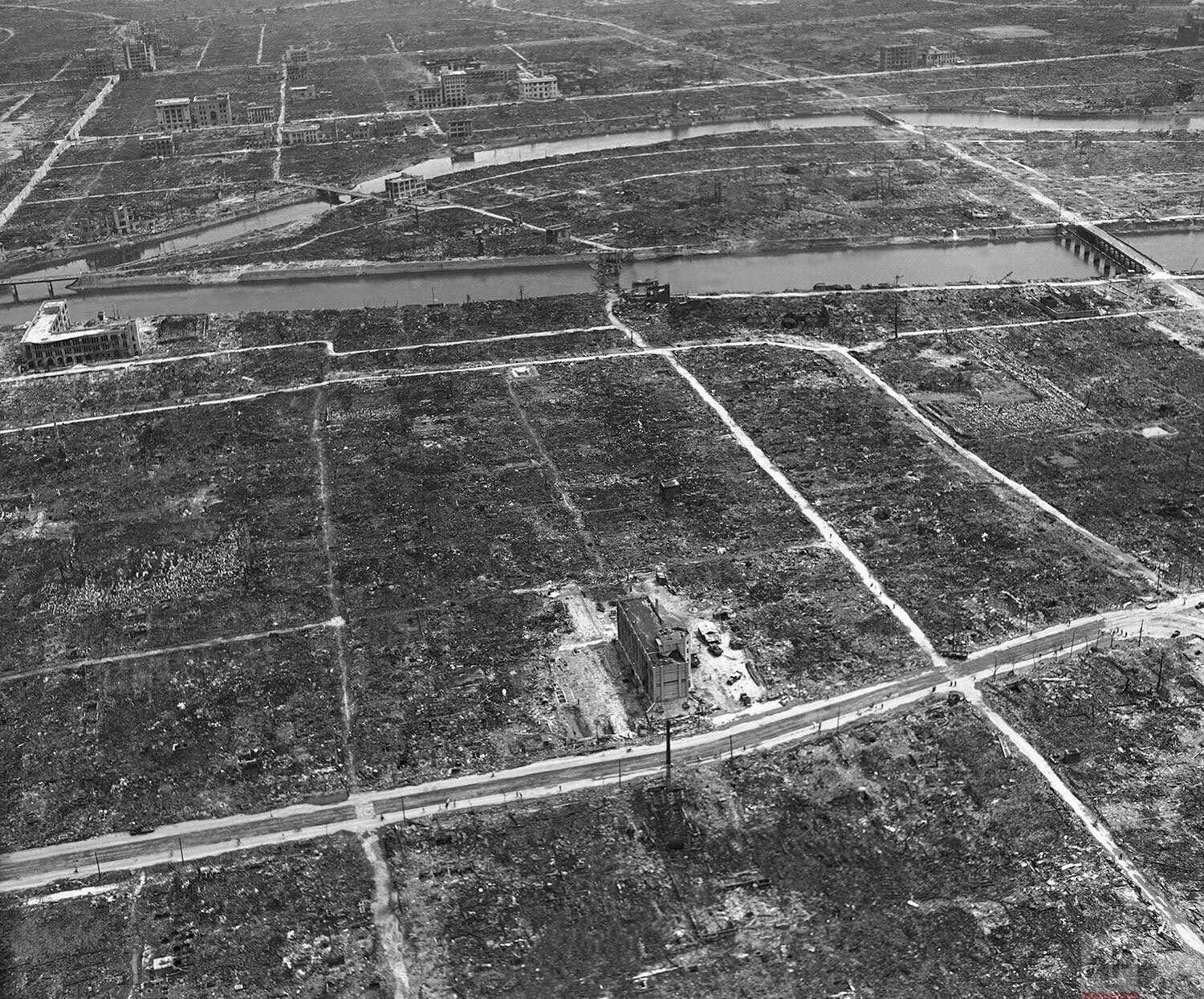 |
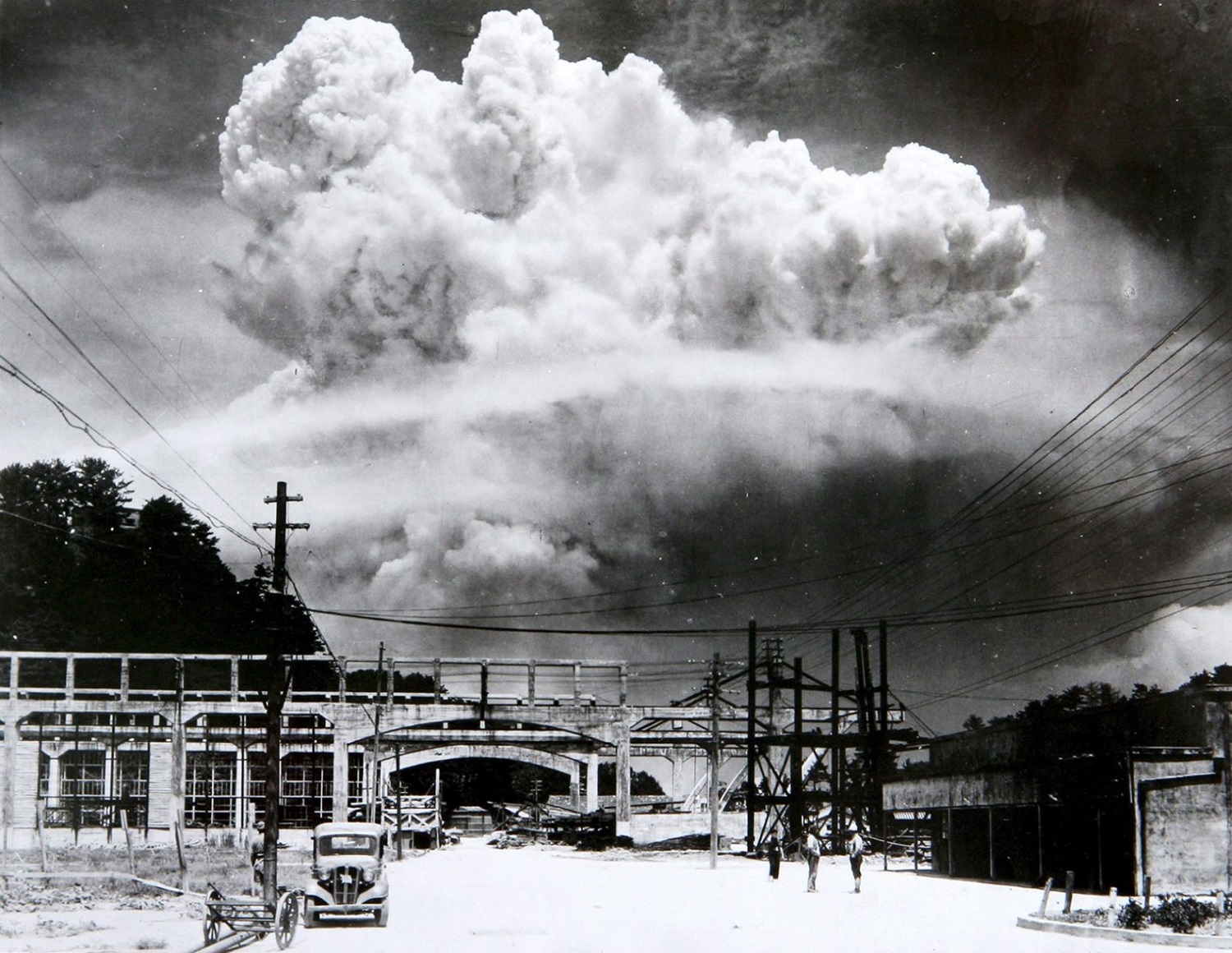 |
Three days after the Hiroshima bombing, on 9/8/1945, the second US atomic bomb, "Fat Man," struck Nagasaki.
The photograph of the mushroom cloud was taken 15 minutes after the bombing from Koyagi-jima Island, more than 10 km south of Nagasaki. It is the earliest ground-level photograph of the event.
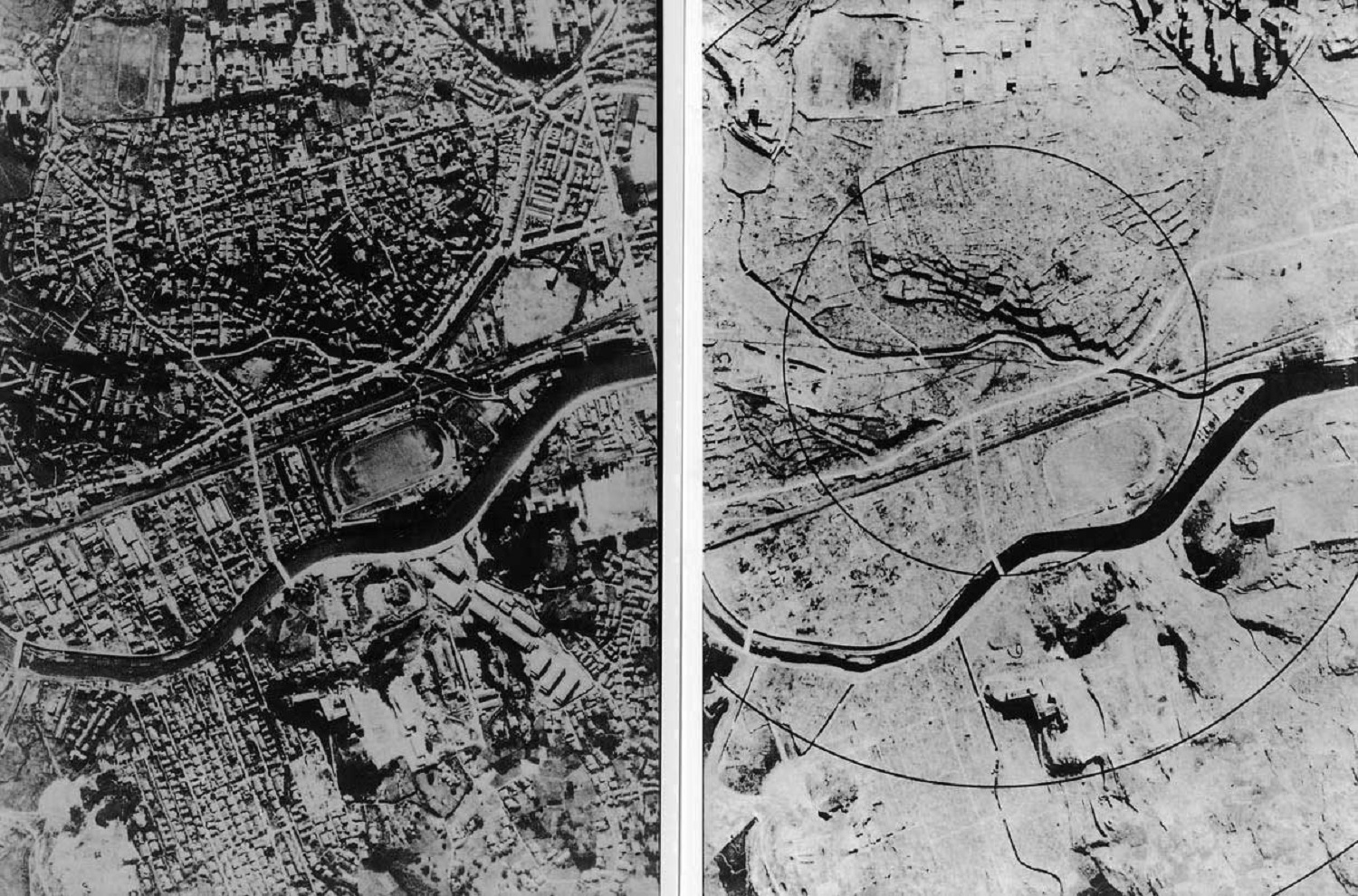 |
Aerial view of the area where the Fat Man bomb fell in Nagasaki before and after the bombing.
The bomb leveled an area of 6.7 km2, destroying buildings up to 2.5 km from the hypocenter. Some earthquake-resistant structures, such as reinforced concrete chimneys, within 1.2 km also collapsed.
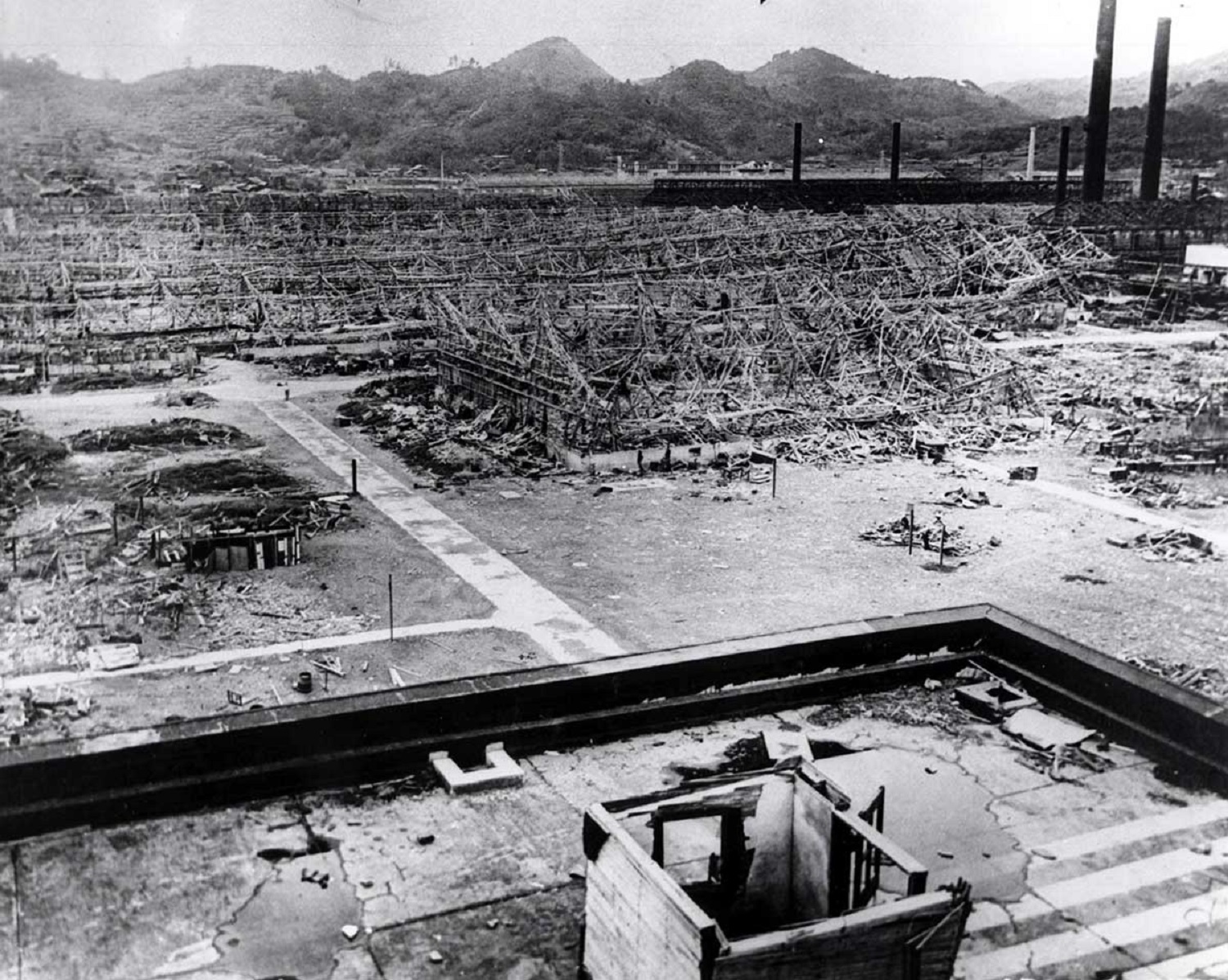 |
This photograph, taken on 14/9/1945, shows the skeletal remains of the Mitsubishi arms factory.
Almost all flammable materials were incinerated, compounding the devastation.
 |
The Americans described the Hiroshima bombing as necessary to end Japanese aggression and World War II, the deadliest conflict in history. The atomic bombing also seemed to be a declaration to the Soviet Union that American science had won the nuclear race.
However, observers find it difficult to justify the Nagasaki bombing three days later. Before the bombing, Nagasaki was a popular destination for foreigners. Now the city is primarily known as a target of US nuclear attack, much like Hiroshima.
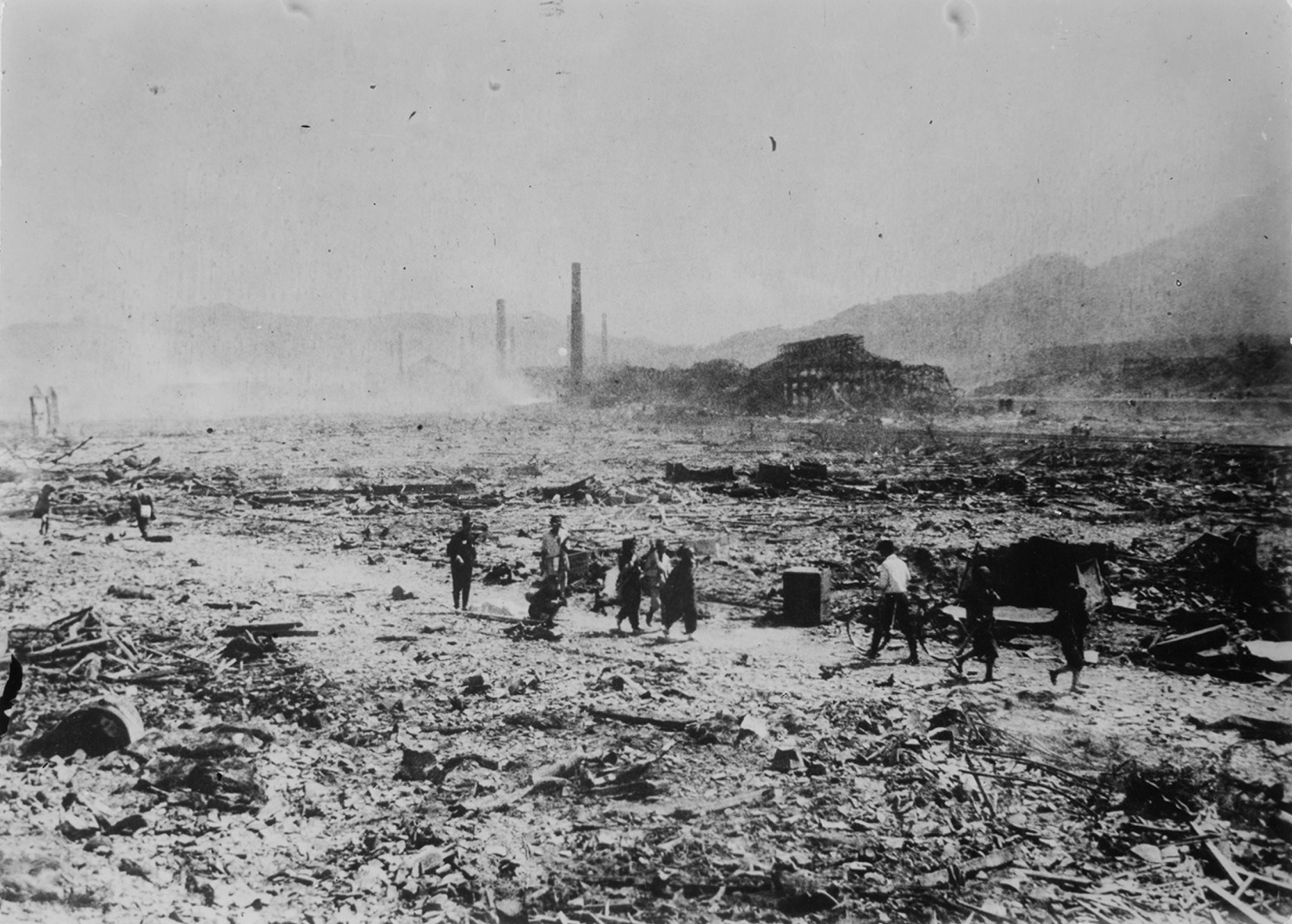 |
Around 40,000 of Nagasaki's 240,000 residents are believed to have been killed instantly, with approximately 74,000 dead by the end of 1945.
In the photo, survivors walk through a devastated area of Nagasaki after the tragedy.
On 15/8/1945, Japan surrendered unconditionally to the Allied forces and signed the instrument of surrender on 2/9/1945, officially ending World War II. However, the consequences and trauma of the war, especially the two atomic bombings, linger.
 |
While photographs of the immediate aftermath are scarce, the horrifying images remain etched in the memories of the survivors. Some recall seeing people with "skin hanging loose from their faces" or "flesh dripping like wax" after the bombings.
The photo shows the shadow of Mitsuno Ochi imprinted on the steps of the Sumitomo Hiroshima bank, where the nuclear bomb detonated. This image is known as "Hito Kage No Ishii," or "Human Shadow Etched in Stone."
Experts believe the image was created when radiation from the blast directly hit Ochi, who was standing on the steps, killing him instantly from severe burns. The surrounding stone surface was bleached by the radiation, leaving Ochi's darker silhouette on the surface.
Toshiyuki Mimaki, 83, a Hiroshima bombing survivor, dedicated his life to advocating for nuclear disarmament. Last year, he was awarded the Nobel Peace Prize for his efforts.
The tragedy 80 years ago left Mimaki with horrific memories, and now he wants to send a message to the world.
"We are facing the most dangerous period," as nuclear powers increasingly mention these weapons of mass destruction. "We have been constantly calling for a world without war or nuclear weapons, but they are not listening."
Photos: National Archives, Asahi Shimbun, Universal History Archive












